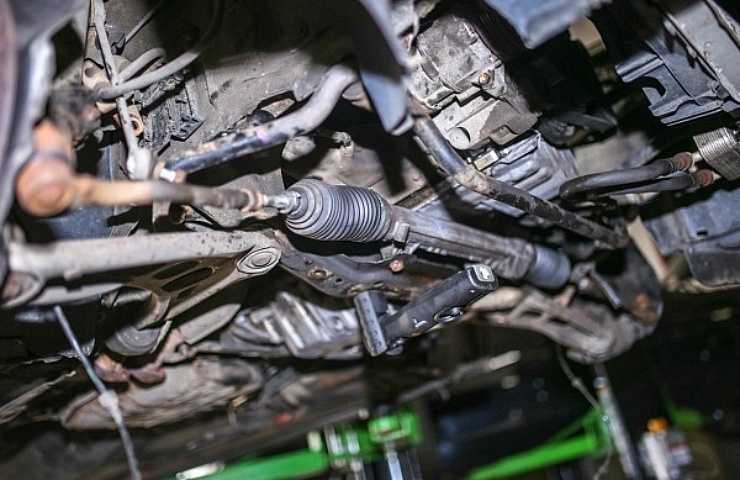Contents
What Is Rack-and-Pinion Steering?
From the 1950s until the early 1980s, recirculating ball was the dominant method of steering technology. It used a worm gear in the steering box. While this system had a few positives, there were numerous disadvantages.
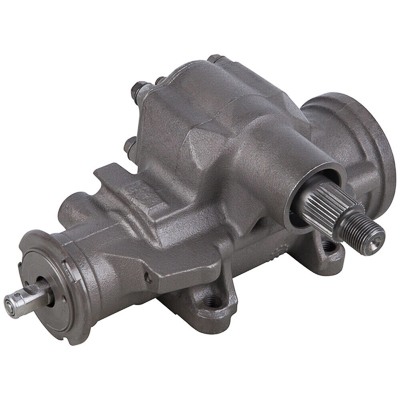
A cast iron power steering box for Chevrolet trucks
The large number of moving parts caused friction and wear, requiring more steering effort. Weight was also a factor, especially in racing vehicles, since the recirculating ball systems weighed 20 to 30 pounds more than rack-and-pinion counterparts.
Rather than using a steering box, a rack-and-pinion system has a gear set encased in a metal tube, with each end of the geared rack extending from the tube. The gear set converts the rotational motion of the steering wheel to the linear motion necessary to turn the front wheels. Additionally, it provides a gear reduction, which decreases the effort it takes to turn the wheels.

A hydraulic power rack-and-pinion steering unit for a Toyota Avalon
A tie rod connects to each end of the rack, with the pinion gear attached to the steering shaft. When the driver turns the steering wheel, the pinion gear spins, moving the rack. The tie rods connect to the steering arm on the spindle.
Rack-and-pinion steering is used in both power-steering setups and non-power-steering systems. (The last vehicle sold in the US without power steering was the Alfa Romeo 4C between 2014 and 2021.) Eliminating power steering means gaining a few extra horsepower, since the engine no longer has to turn the steering pump. It’s hardly worth the effort, given the heavy steering.
Shop now for rack-and-pinion steering partsAdvantages of Rack-and-Pinion Steering
Rack-and-pinion steering is lightweight, less susceptible to wear and tear, and delivers a much better feel when turning compared to the old-style recirculating ball steering. Turning your vehicle left or right requires far less effort, giving the driver a more precise steering and road feel.
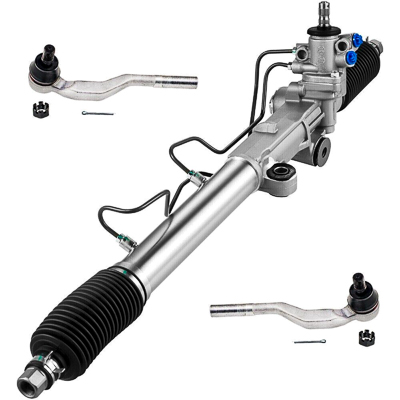
A hydraulic power rack-and-pinion assembly with tie-rods
Racks are built with different steering ratios or gear reductions to shorten or lengthen the number of steering wheel rotations to go lock-to-lock on the wheel end. It is especially applicable in racing vehicles, allowing the driver to use minimal movement to steer the car in one direction or the other for precise handling and maneuvering. It also shows up in consumer vehicles for ease in parking, backing up with a boat or trailer, and U-turns in tight areas.
Read: New Suspension Bushings Can Improve Handling
Disadvantages of Rack-and-Pinion Steering
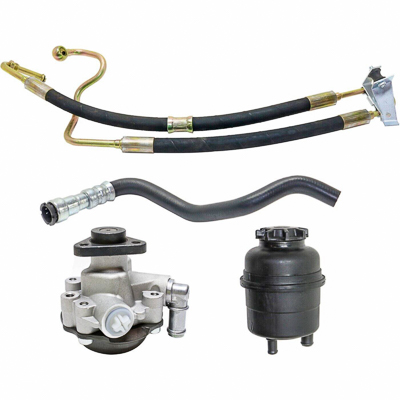
A power steering pump and hose replacement kit for BMW
Like almost anything mechanical, rack-and-pinion systems can break and wear out. The gears are constantly engaged while steering, and metal-on-metal contact leads to some wear and tear. Fittings can loosen, and bushings and bearings used in the system can also wear out, leading to slippage and looser engagement. A steering fluid leak is also possible since the system is assisted by power steering, which operates via a pump.
Read: Identifying Common Engine Leaks
Shop now for power steering pumps and hosesEvidence of excessive wear or a faulty system can show up in uneven tire wear, a misaligned front end, noise while turning, loose tie rods, or worn struts or ball joints in the front suspension. While rack-and-pinion steering systems are generally reliable and trouble-free, these are common problems.
Discover: What Is Your Steering Wheel Telling You?
Safer and Cheaper
The move by automakers to rack-and-pinion steering technology has been a significant advancement in terms of safety and cost-effectiveness. The system can break and occasionally need repair, but this happens with far less frequency and cost than recirculating-ball steering systems.

An electric power rack-and-pinion steering assembly for a Porsche 911 car
Automotive engineering advancements continue, and slight variations to rack-and-pinion steering are beginning to show up. Electronically power-assisted rack and pinions are becoming much more common. But the basics of rack and pinion haven’t changed, just how it is powered.
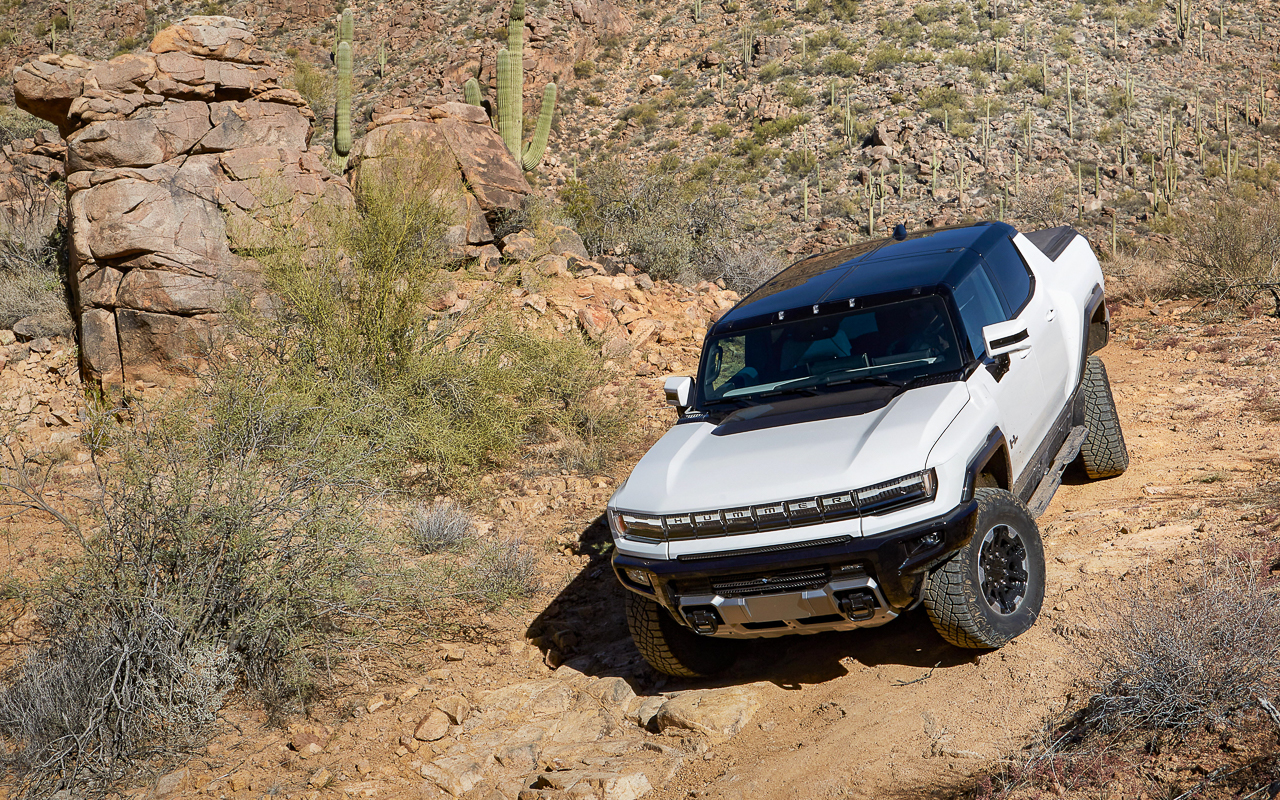
A 2022 GMC Hummer EV pickup in CrabWalk four-wheel steering mode. (Photo: GMC)
Manufacturers are also equipping more vehicles with four-wheel steering to improve the handling of high-end sports cars and the maneuverability of the largest car, SUV, and truck models. It can be invaluable in off-road vehicles like the new GMC Hummer EV truck with its sideways CrabWalk four-wheel-steer mode.
We can expect advanced steering technology to continue developing with methods to lessen tire wear and frequency of wheel alignments and increase turning and handling options.
Shop now for steering and suspension parts
